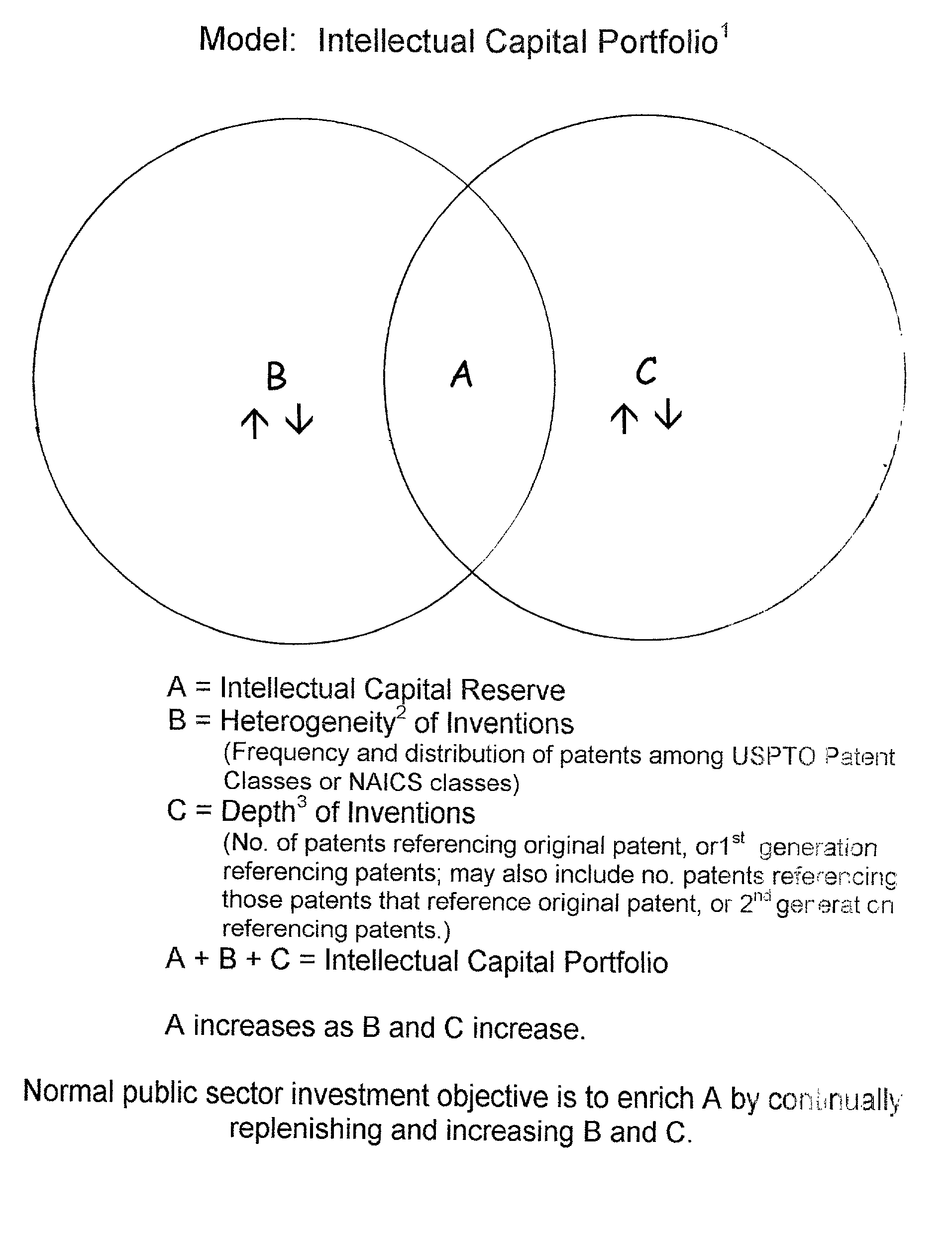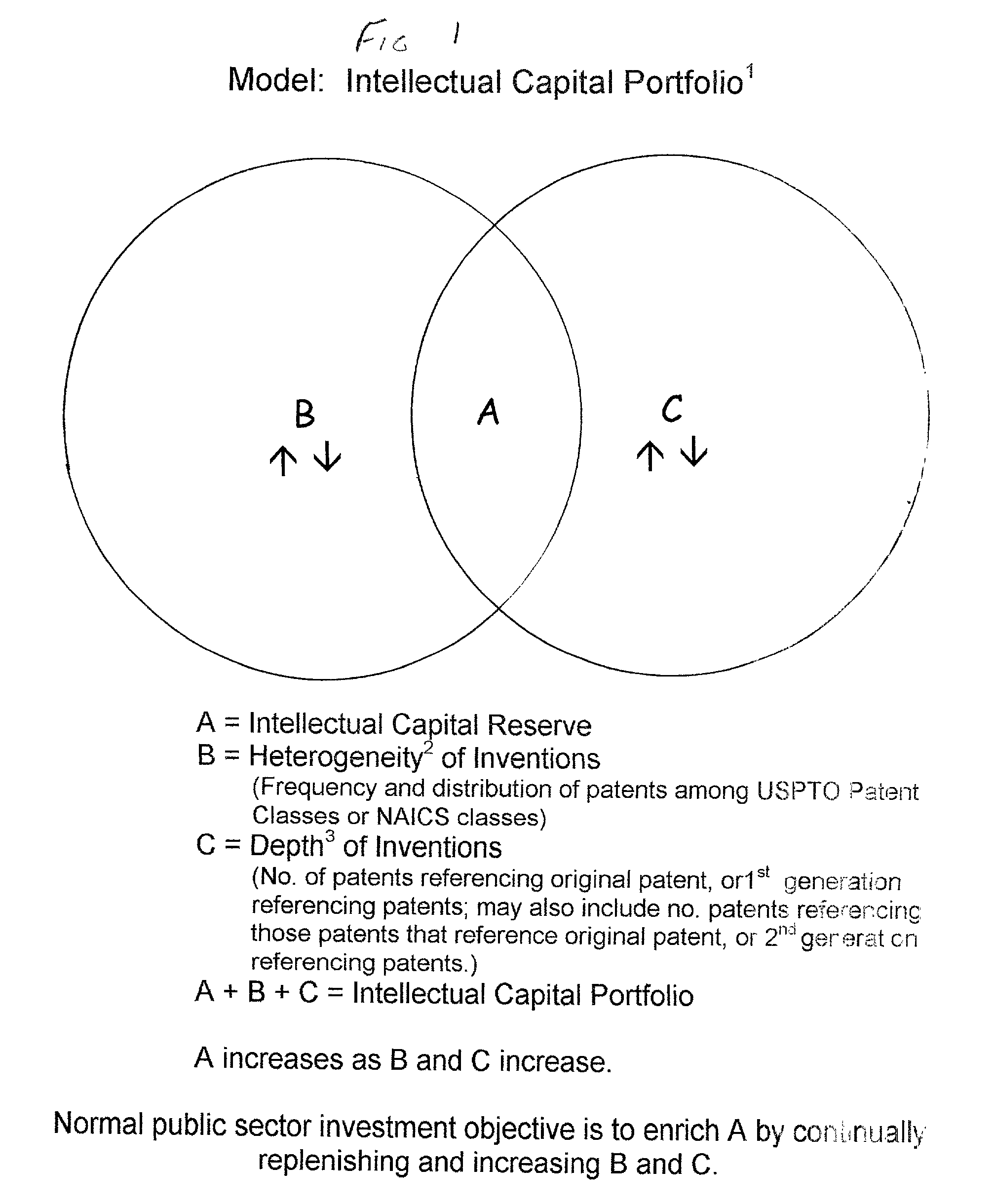Method for evaluating a patent portfolio
a portfolio and portfolio technology, applied in the field of methods for evaluating or valuing intangible property, can solve the problems of not having a logical relationship to the actual value over the life of the patent, the cost of securing the issuance of the patent, and the difficulty of fixing the valuation elemen
- Summary
- Abstract
- Description
- Claims
- Application Information
AI Technical Summary
Problems solved by technology
Method used
Image
Examples
Embodiment Construction
[0027] To illustrate, patents issued to, and waivers of patent rights issued by, the National Aeronautics and Space Administration (NASA), from 1976 to 1996, have been evaluated as described above. NASA ranks in the top fourth in all federal agencies performing R&D, in three key measures: R&D funding, productivity, and technology transfer:, i.e. funding, patents received, and licenses issued. The research spans almost the second half of the twentieth century.
[0028] As the baseline for the heterogeneity of NASA patents issued during 1976-1996 the heterogeneity, or distribution among technology classes, of all U.S. utility patents issued during that same time was used. Because of the large volume of data only those patents whose numbers exceed the average distribution of the respective patents sets among patent classes were considered.
[0029] The arithmetic average patent class distribution, for all U.S. patents issued during 1977-1999, is 2,188,791, distributed equally among 451 paten...
PUM
 Login to View More
Login to View More Abstract
Description
Claims
Application Information
 Login to View More
Login to View More - R&D
- Intellectual Property
- Life Sciences
- Materials
- Tech Scout
- Unparalleled Data Quality
- Higher Quality Content
- 60% Fewer Hallucinations
Browse by: Latest US Patents, China's latest patents, Technical Efficacy Thesaurus, Application Domain, Technology Topic, Popular Technical Reports.
© 2025 PatSnap. All rights reserved.Legal|Privacy policy|Modern Slavery Act Transparency Statement|Sitemap|About US| Contact US: help@patsnap.com


